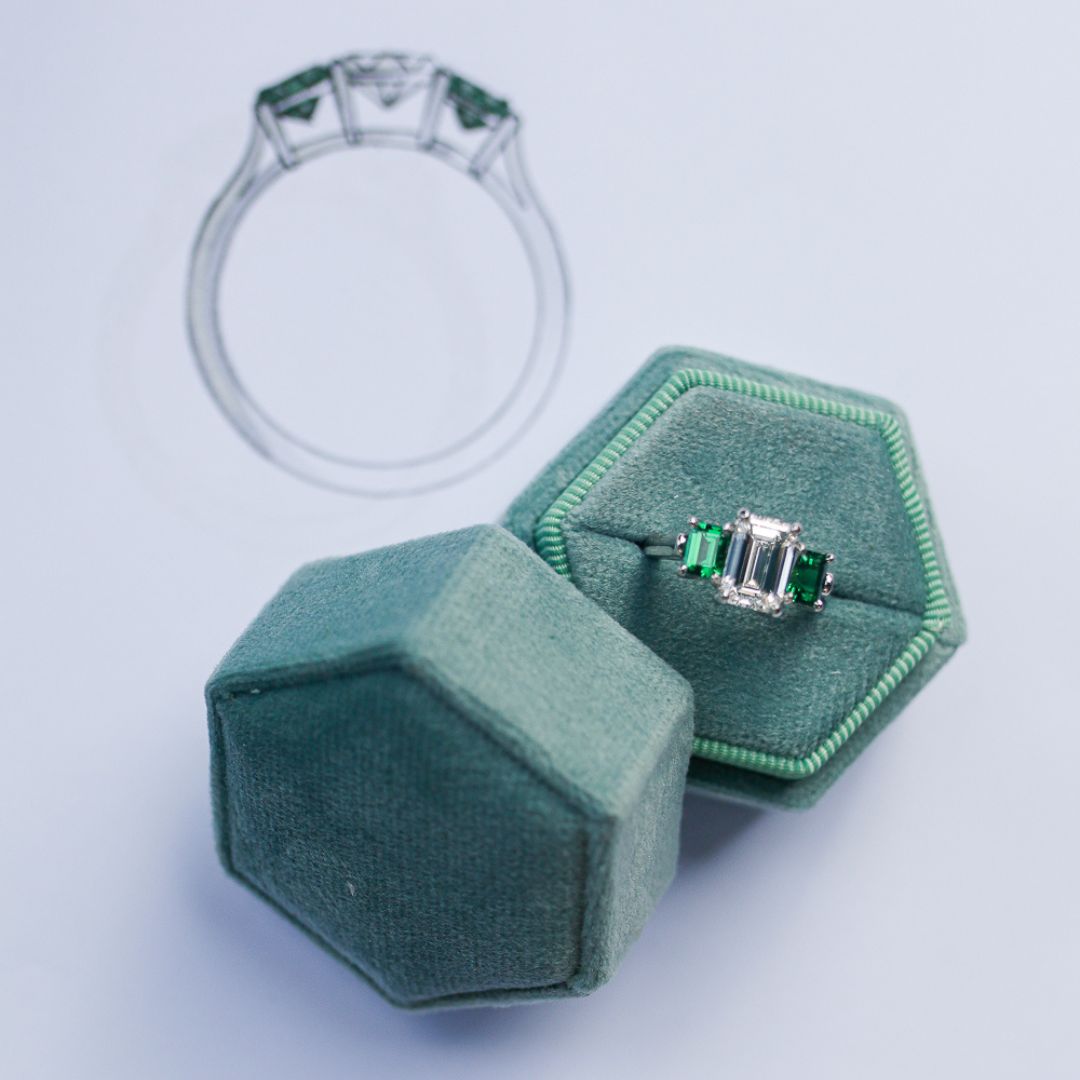
To the naked eye, an engagement ring is just a band with a diamond on top. What you may not know is that it is actually made up of multiple parts and learning the names of these parts can make all the different between you and the person who has not done their research when it comes to buying an engagement ring. Think of it this way: you want to be able to communicate your preferences to a jeweler AND understand the terminology they throw your way.

Components that Make an Engagement Ring
Contrary to the notion that the engagement ring is just a band with a center stone, it is actually comprised of nine parts. Naturally, the center stone is the star of the show and considered the most important one, but the other parts are just as important since they not only showcase the center gem, they work together to make sure the ring looks and fits its best. While the round stone has long been the most popular choice for center stone, the oval, marquise, and radiant cut diamonds are quickly catching up.
Nearly as important as the center stone is the setting. Its purpose is to determine the look, performance, and maintenance of the ring and, therefore, must be seriously considered when making your purchase. A few common styles for setting include:
- Solitaire – featuring an all-metal band and a singular center stone, it draws all eyes toward the gem. Always a classic, they are also easy to style with bands that have other stones.
- Halo – featuring a center stone that appears larger because it is surrounded by smaller diamonds on all sides.
- Three stone – featuring a center stone with two smaller accent stones on either side. Sought after for their representation of past, present, and future.
- Bezel – featuring the most security, the center stone is completely encircled by a layer of precious metal. It is popular with those going for the contemporary look.
- Pavé – featuring a band mounted with tons of tiny diamonds set close together for that diamond-encrusted look.
Located at the top of the band, is the head of the ring, sometimes confused with setting, since it supports the center stone. It also includes the prongs and gallery. Prongs are small metal tips that hold the center stone in place and come in a vast array: claw prongs, bead prongs, V or U-shaped prongs, etc; depending on the shape of your stone, you can expect to see anywhere from four to six prongs, but they are heavily depended on to ensure your stone stays where it is. While the gallery is part of the head, it refers to the detailing on the underside of the center stone that you only see from the side profile. This is a great place to slip in some intricate designs or hidden diamond accents. Not to be confused with the gallery, the bridge is the part of the ring that rests on top of the finger and can be found beneath the head. It provides more support for the head and can be another great spot for hidden accents or patterns. The top sides of the ring, linking bridge to shank is referred to as the shoulder of the ring. The shank, often referred to as the band, is the part of metal that encircles the finger. Typically starting at the end of the shoulders, the shank can be flat, curved, or completely covered in diamonds – just to name a few possibilities. The shank not only determines how the rings looks, but how it feels to the person wearing it. At the bottom of the shank is the sizing area. This is the portion of band that can be cut, should the ring need to be re-sized.
Visit our any of our Schwarzschild Jewelers locations to find the perfect engagement ring for you!


